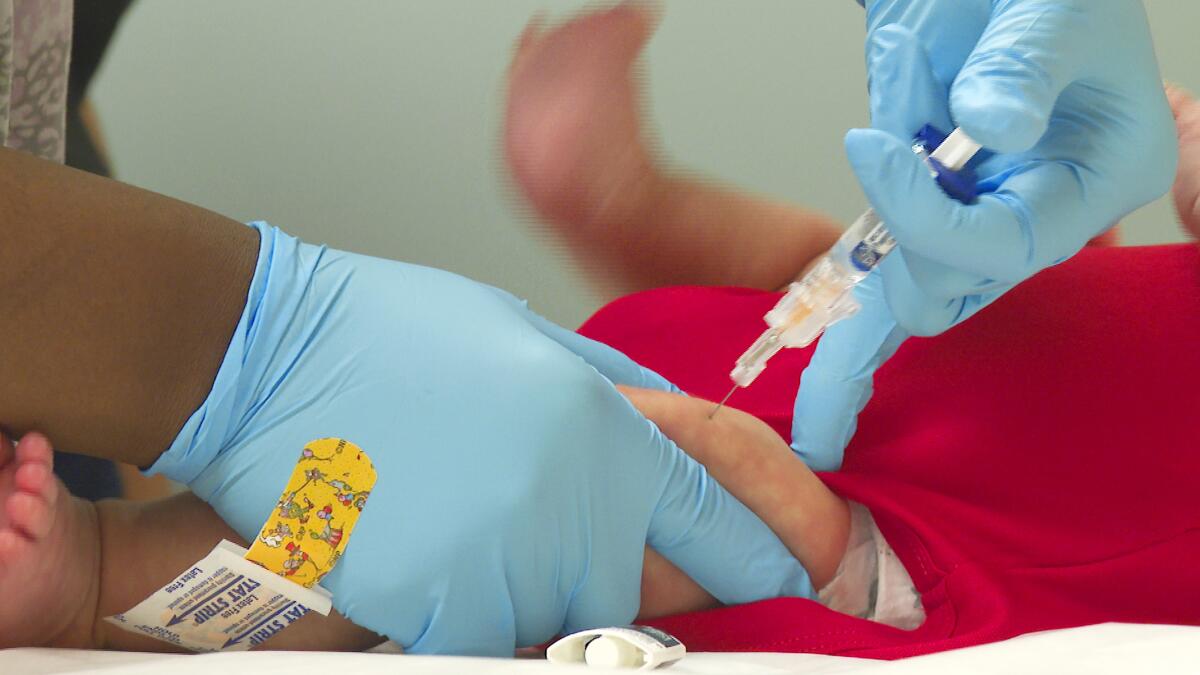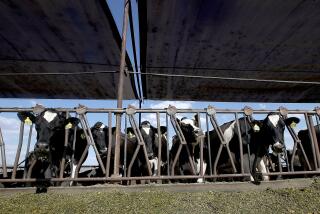California ‘overdue’ for whooping cough outbreak as cases spike across U.S.

It’s been five years since the last major outbreak of whooping cough in California, but the disease is on the rise.
Nationwide, cases of pertussis, as the illness is formally known, are nearly three times higher in 2024 than during the first five months of 2023, according to data from the U.S. Centers for Disease Control and Prevention.
And in California, case counts “have been higher during the first several months of 2024 than in the prior several years,” the state Department of Public Health said in a written statement to The Times.
California has recorded 506 cases so far this year, almost four times the 128 cases reported during the same span last year.
The respiratory infection, which is especially dangerous for infants, is cyclical by nature, spiking every three to five years, said Dr. Nava Yeganeh, the medical director for vaccine preventable disease control at the Los Angeles County Department of Public Health.
In 2019, whooping cough cases in L.A. County spiked to over 1,000. Since then, counts have been relatively low, “so we are overdue,” Yeganeh said.
Last summer’s COVID wave in California was big enough to cause significant disruptions. As a new family of subvariants takes hold, how bad will this year be?
While numbers are currently not trending upward at the rate of the 2019 level, “it could be coming,” she added.
The infection is caused by bacterial droplets and causes symptoms one to three weeks after exposure. Initially, symptoms can include a runny nose, cough and fever, Yeganeh said, but they can progress to “violent, relentless coughing fits” that can disrupt sleep and cause rib fractures and hematomas in eyes.
Most at risk for the disease are infants, who can have breathing problems to the extent of turning purple around their mouths.
“They often need to be hospitalized and monitored closely,” Yeganeh said.
The earliest age an infant can be vaccinated is six weeks. Children receive five doses of the vaccine by the time they are 6. And California officials require a booster dose for students entering seventh grade. The CDC and CDPH also recommend booster shots for adults.
It’s too early to know if FLiRT will be a major change in the COVID picture; so far impacts have been small. But officials are urging Californians to be prepared.
Yeganeh said she was traumatized by seeing infants with whooping cough struggle to breathe when she worked in hospitals.
L.A. County, however, has not reported any infant hospitalizations since the pandemic began in 2020. Vaccinating pregnant women “has made a huge difference for us,” Yeganeh said.
Prenatal vaccination, which occurs during the third trimester of a pregnancy and allows the mother’s immunity to transfer to the baby, at least temporarily, “prevents most cases in infants younger than 2 months of age,” the CDPH says.
The effectiveness of masking and well-ventilated indoor spaces — lessons from the COVID years — also applies to whooping cough, Yeganeh said.
Nearly 50 students at Harvard-Westlake School have been recently diagnosed with whooping cough, in an outbreak that has forced school officials to send students home at the first sign of illness.
She noted that outbreaks on the East Coast could make their way to California, as they have done with RSV, or respiratory syncytial virus.
“We’re definitely keeping an eye out and expecting to see outbreaks of pertussis this year,” she said.
Those with symptoms should get tested, and those who are infected should be treated with antibiotics if they have the infection to prevent further transmission.
And experts recommend keeping up to date on vaccinations. County-level kindergarten data show a dip in the rate of those with current vaccinations, from 95% in 2019 to 92% in 2020. The numbers have climbed back to 95% since then.
More to Read
Sign up for Essential California
The most important California stories and recommendations in your inbox every morning.
You may occasionally receive promotional content from the Los Angeles Times.













